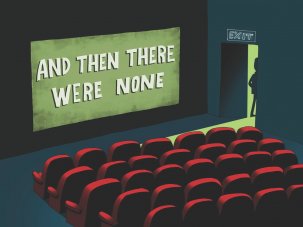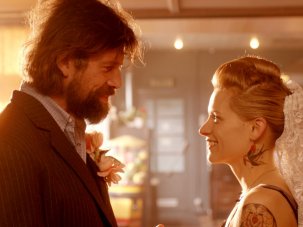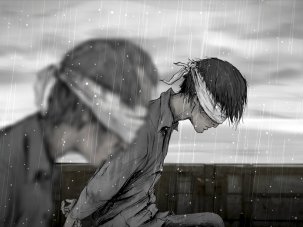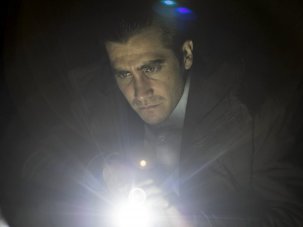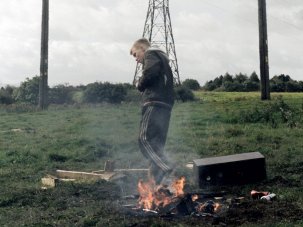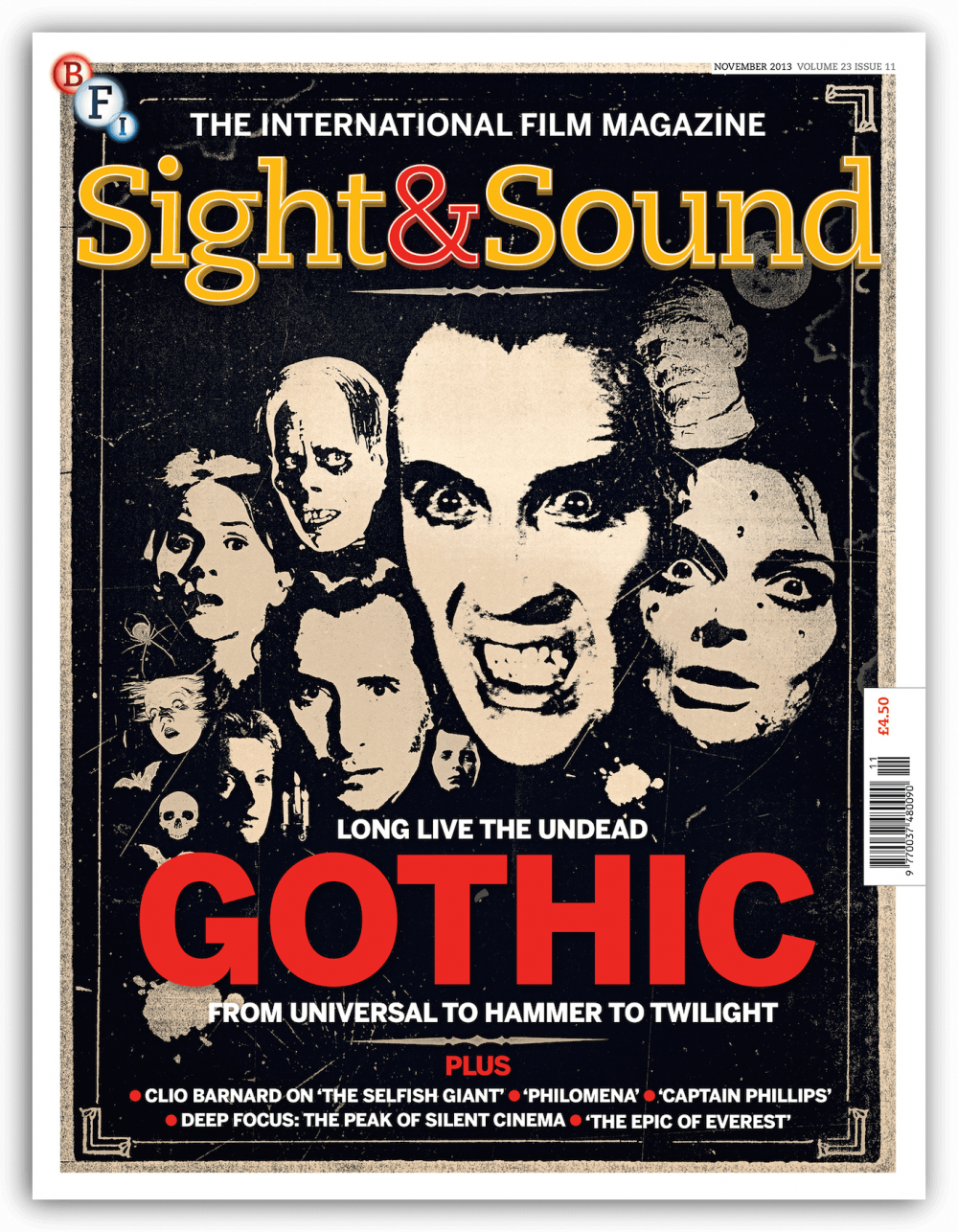
Welcome to the dark side, once again. As the BFI unveils a massive three-month blockbuster season devoted to all things Gothic, we follow last month’s Wicker feature with another issue luring us towards a world of lingering twilight shadows and dank mystery.
|
Posted to subscribers and available digitally 4 October On UK newsstands 8 October |
Rhidian Davis is our intrepid explorer of the deep-seated cultural roots of film’s abiding, anxious fixation on the uncanny and the undead, tracing the Gothic’s migration from the writings of Mary Shelley, Bram Stoker, Ann Radcliffe and others to the upstart medium of cinema, seemingly tailor-made for the purveyance of shivery thrills, where James Whale in particular became the driving force behind the establishment of mythic archetypes which also drew heavily on the occult Tarot.
“Frankenstein is the creation myth that underpins the cinema: an art of obsessive assembly, sparked into movement through the crackle of electricity,” avers Davis, pursuing the Gothic’s macabre incarnation in such iconographic symbols as the old dark house, the mummy and the woman in black into the realms of social history, linking them to imperial violence, guilt and fear of diminished standing and loss of power.
As an obvious adjunct, could there be a more entertaining or better informed guide to the profundities of the Gothic than Roger Corman, who produced several of the ‘inherently cinematic’ stories of Edgar Allen Poe and worked with those colossi of the Gothic imaginary, Vincent Price and Christopher Lee.
He talks to James Bell about his early fascination with Poe’s stories and his later struggles to adapt them. More than any other 19th century writer, Poe prefigured Freud’s more scientific explorations of the unconscious mind, “which is not aware of external reality – that’s the province of the conscious mind,” according to Corman. “So for the Poe films I thought I should stay away from reality and shoot everything inside a studio, where I could create my own effects, my own unreality.” He succeeded brilliantly, and will share further insights and anecdotes as one of the guests during the BFI’s Gothic celebrations this autumn.
In the decade before Whale was creating his gods and monsters at Universal, soldier and pioneering cinematographer John Noel was shooting his groundbreaking early documentary The Epic of Everest, restored and released by the BFI this month.
Wade Davis supplies the context to Noel’s epic and reveals the technical innovations he virtually invented to make it possible. In the wake of the First World War’s horrors, he writes, “the image of the noble mountaineer scaling to heights, climbing literally through a zone of death to reach the heavens, high above the sordid reality of the modern world, would first emerge from the imagination and through the lens of John Noel.”
It’s an incredible story of cinematographic derring-do, laced with tragedy – the deaths of mountaineers George Mallory and Sandy Irvine on the expedition Noel was capturing if anything enhanced the film’s mystique on its release, and even today, when very little lies beyond the reach of the all-pervasive camera, the film retains its awe-inspiring potency.
Continuing the theme of silent classics, our latest Deep Focus feature explores the glittering swansong of silent cinema, generally regarded as being the years 1926-1931, as the talkies gradually cemented their hegemony in the wake of The Jazz Singer’s release in 1927. Ian Christie is our expert guide to this astonishingly fertile terrain, addressing two important questions: was there a special language of silents, and what in particular was lost in the transition to the talkies?Christie selects 15 key films of the period to explore in greater depth the art of creating purely “visual storytelling… a unique visual music” – Sunrise, 7th Heaven, The Wind, The Crowd, Pandora’s Box, amongst others. It’s safe to say that many of you will be reaching for those old favourites on DVD after reading this.
“The key to Clio Barnard’s work is a radical pursuit of truth, by whatever means necessary.” That bold declaration was amply borne out by the formal innovations of Barnard’s debut feature The Arbor, and consolidated by her second, the Cannes prize-winner The Selfish Giant. Set amongst an underclass on Bradford’s edgelands, Barnard’s tale of teenage friendship and against-the-odds entrepreneurialism is couched in shades of elegiac Loachian naturalism. Barnard discusses authenticity, the instability of truth and the Alexa camera with Kate Muir.
Filipino Lav Diaz is one of the greatest living directors yet barely known in the UK, partly owing to most of his films’ extended running times. His latest, the outstanding Norte, End of History, a hit at this years’ Cannes, weighs in at a mere four hours and can be seen at this year’s London Film Festival.
Aaron Cutler sets the new film in the context of Diaz’s whole oeuvre, in which “the posing of unresolved contradictions as part of an ongoing moral struggle is integral.” Profoundly engaged with his country’s history and politics, and the aesthetics and politics of cinema, Diaz turns to colour in El Norte instead of his typical black-and-white and goes after big quarry – no less than the birth of fascism in the Philippines, in the guise of a character not so far removed from a young Ferdinand Marcos.
Also in this month: Hannah McGill on the significance of balloons in cinema, Kim Newman on Ikarie XB 1 – the magnificent 60s Czech sci-fi film that exerted a huge influence on Kubrick’s 2001 A Space Odyssey – Eduard Artemiev’s haunting music for several Tarkovsky masterpieces, and a career overview of Turner Prize-winner Elisabeth Price.
-
Sight & Sound is now available in digital editions for Apple iOS, Android and Kindle Fire as well as computer desktops. Scroll this gallery to browse this issue’s sections
-
RUSHES: the grotesque world of Jan Svankmajer; Hannah McGill on balloons; five key American Civil War films; the director of Sundance hit Cutie and the Boxer; Mark Cousins in Telluride
-
THE INDUSTRY: How I Live Now’s journey to the screen; the success of The Great Beauty; Ben Roberts on how to build a sustainable UK film industry; Kieron Corless welcomes a new agency for artists working in film
-
FESTIVALS: Nick James feels at home in Venice; Gabe Klinger on the thrill of not reporting from Venice
-
Shapeshifting, all-devouring, steeped in blood – the influence of the gothic tradition now lurks in all corners of our culture, says Rhidian Davis on the eve of a major BFI season. PLUS Roger Corman on his Edgar Allan Poe cycle
-
Clio Barnard brings a fresh sensibility to British Loachian social realism in The Selfish Giant. The director talks to Kate Muir about art, inspiration, truth and her teenage obsession with Mick Jagger
-
The Epic of Everest, about Mallory and Irvine’s ill-fated 1924 ascent, was more than a record of a heroic failure, says Wade Davis: it set new standards for documentary film
-
Lav Diaz’s Norte, the End of History gazes at Ferdinand Marcos’s legacy in the Philippines through a Dostoevskian lens. By Aaron Cutler
-
DEEP FOCUS: Ian Christie picks 15 key films from the highpoint of the silent era, the period 1926-30, when the form reached a zenith of poetic expression and subtlety before the coming of sound swept it all away
-
WIDE ANGLE: Toronto’s Wavelengths; low-budget existentialist Gary Walkow; the alien worlds of Eduard Artemiev; history repeats itself, every six seconds; artist filmmaker Elizabeth Price
-
FILMS OF THE MONTH: The Broken Circle Breakdown, Captain Phillips, Gloria, Philomena plus 35 other new releases
-
HOME CINEMA: Kim Newman relishes a sumptuous transfer of Czech sci-fi Ikarie XB 1; Bryony Dixon finds real treasures in a release of US films by the New Zealand Film Archive, plus 14 other new releases
-
BOOKS: My Lunches with Orson; Orson Welles and Roger Hill; Derek Jarman’s Sketchbooks; The View from the Train: Cities and Other Landscapes; The Searchers: The Making of an American Legend
-
ENDINGS: Philip Concannon on the surprise finale of Paul Thomas Anderson’s Magnolia
Features
COVER FEATURE: Shadowlands
Shapeshifting, all-devouring, steeped in blood – the gothic tradition has grown into a monster of terrifying size and limitless appetites, swallowing other genres and lurking in every corner of our culture. Now, a major BFI season brings it back into the limelight. By Rhidian Davis.
PLUS The Poe perplex
Between 1960 and 1964, a cycle of films based on Edgar Allan Poe’s Tales of Mystery and Imagination revived the gothic tradition and reinvented modern horror. By Roger Corman.
The instability of truth
Building on the success of her documentary hybrid The Arbor, Clio Barnard’s first venture into fiction, The Selfish Giant, explores life around scrap metal yards. Here she talks about the joys of working with children (and horses), making the move from artist’s films to features, and growing up looking like Mick Jagger. By Kate Muir.
The tragic mountain
Filmed on the 1924 climbing expedition that cost George Mallory and Sandy Irvine their lives, The Epic of Everest was more than a record of a heroic failure: it broke new ground and set new standards for documentary making – and had political effects that are still being felt. By Wade Davis.
The history man
Lav Diaz’s determination to explore the darkest aspect of his homeland’s past, and to give his stories as long as they need, is almost legendary. In Norte, the End of History, he gazes at Ferdinand Marcos’s legacy in the Philippines through a Dostoevskian lens. By Aaron Cutler.
DEEP FOCUS: The peak of silent cinema
After decades of neglect and condescension, contemporary filmmakers, critics and audiences are learning to appreciate the marvels of silent film, and how much more it was than talkies minus the words. During the highpoint of the silent era, between 1926 and 1930, the form reached a zenith of poetic expression and subtlety before the coming of sound swept it all away. Here we present a personal selection of 15 key films from that period. By Ian Christie.
Regulars
Editorial Goodbye Mr French
Rushes
In the frame: Keeping it surreal
An exhibition exploring the versatile artistry of Jan Svankmajer reveals the full breadth of his sensual, often grotesque creations. By Michael Brooke.
Object lesson: Hope floats
Balloons are potent emblems of childhood innocence and joy – and of just how quickly they can vanish. By Hannah McGill.
The five key… American Civil War films
On the eve of the re-release of Gone with the Wind, we wade into battle with our pick of the major films about the conflict. By Michael Atkinson.
First sight: Scenes from a marriage
Zachary Heinzerling’s Sundance documentary hit Cutie and the Boxer offers an affecting portrait of artistic rivalry and enduring love. By Sam Davies.
Dispatches: Colorado dreaming
Fast and slow, sad and happy, always widescreen: after 40 years, Telluride still delivers an electrifying jolt all of its own. By Mark Cousins.
The Industry
Development tale: Daisy pulls it off
The producers of How I Live Now had to wait years for the right director to be free – and the right actor to grow up.
The numbers: The Great Beauty
Brewster: Sweet smell of success
A sustainable UK film industry requires us to support voices of note rather than simply strive to make British cinema more mainstream. By Ben Roberts.
Profile: Sitting pretty
More and more artists are moving from gallery to cinema, but the transition can be painful. SoFA aims to cushion the blow. By Kieron Corless.
Festivals
Venice: Bringing it all back home
Period sagas, dysfunctional families, alien man-eaters and camels – the 70th Venice Film Festival covered the waterfront. By Nick James.
Diary: A case for Zen
After years of going to festivals as a critic, it comes as a shock to find yourself being one of the attractions. By Gabe Klinger.
Wide angle
Preview: Coming up for air
Toronto’s Wavelengths strand offers an experimental, art-centric refuge amid TIFF’s marketplace bustle and pre-awards-season buzz. By Jason Anderson.
Profile: Walkow’s way
Lynch, Bolaño, Dostoevsky, Rohmer and Corman are just a few of the eclectic influences of low-budget opportunist existentialist Gary Walkow. By Iain Sinclair.
Soundings: Psychic weather
Neither neoclassical nor socialist-realist, Eduard Artemiev’s scores for Tarkovsky seem to emerge from the natural worlds of the films. By Daniel Barrow.
Primal screen
Mobile apps for sharing ultra-short movies hark back to the experimental eclecticism of Victorian filmmaking. By Bryony Dixon.
Artists’ film and video: Clap, clap, clap
Elizabeth Price’s Turner Prize-winning videos deploy a variety of languages in an attempt to explore hidden histories and memories. By Melissa Gronlund.
Reviews
Films of the month
Captain Phillips
Philomena
Plus reviews of
The Blueblack Hussar
Camp 14: Total Control Zone
Closed Circuit
Cold Comes the Night
The Crash Reel
Cutie and the Boxer
Diana
Drinking Buddies
Enough Said
The Fifth Estate
Folie à deux: Madness Made of Two
Last Passenger
The Lebanese Rocket Society
Like Father, like Son
Love, Marilyn
Machete Kills
Mademoiselle C
Morrissey 25: Live
Muscle Shoals
NFA
9.79*
The Nun/La Religieuse
One Direction: This Is Us
On Landguard Point
Prince Avalanche
Prisoners
Project Wild Thing
Riddick
The Selfish Giant
Short Term 12
The Taste of Money
Turbo
We Are What We Are
Le Week-end
Which Way Is the Front Line from Here? The Life and Time of Tim Hetherington
Home cinema features
Space, the communist frontier: Ikarie XB 1
Soviet dominance in the early space race led to a brave cinematic vision of interplanetary exploration. By Kim Newman.
Rediscovery: American Treasures from the New Zealand Archive
Some rare gems of early American cinema have been rescued thanks to collectors on the other side of the world. By Bryony Dixon.
Plus reviews of
Betty Boop: The Essential Collection Vol 1
Body Double
Code Name Ruby
Early Fassbinder
The Fall of the House of Usher
The Final Programme
The Life of Oharu
Documentaries by Sergei Loznitsa
Serpent’s Path/Eyes of the Spider
Two Men in Manhattan
Van Gogh
Television
Belfagor
Crocodile Shoes
Six Centuries of Verse
Books
Ben Walters browses a pair of books about the witty and irascible Orson Welles.
Brian Dillon feels a collection of Derek Jarman’s sketchbooks could have offered more.
Owen Hatherley enjoys a journey into space with Patrick Keiller.
Tom Charity is fascinated by a study of The Searchers.
Letters
Cutting The Wicker Man, omissions from our film directors on TV special, Eddie Marsan, Hannah Arendt’s philosophy
Endings
Magnolia
A kaleidoscopic, Altmanesque, biblical epic – Paul Thomas Anderson then finishes it on a note of quiet affection. By Philip Concannon.
Further reading
-
The Digital Edition and Archive quick link
Log in here to your digital edition and archive subscription, take a look at the packages on offer and buy a subscription.




